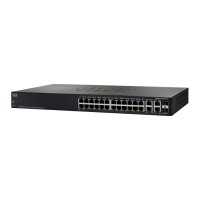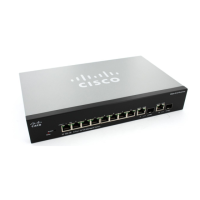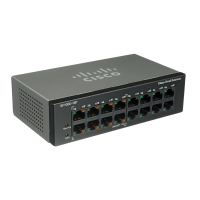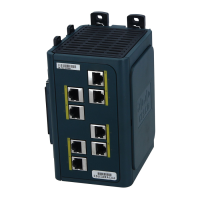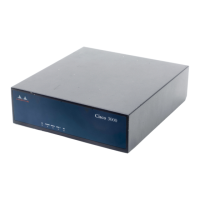Administration
Traceroute
72 Cisco Small Business 200, 300 and 500 Series Managed Switch Administration Guide (Internal Version)
5
• IP Version—If the host is identified by its IP address, select either IPv4 or
IPv6 to indicate that it will be entered in the selected format.
• Source IP—Select the source interface whose IPv4 address will be used as
the source IPv4 address for communication messages. If the Host Definition
field was By Name, all IPv4 and IPv6 addresses will be displayed in this
drop-down field. If the Host Definition field was By IP Address, only the
existing IP addresses of the type specified in the IP Version field will be
displayed.
NOTE If the Auto option is selected, the system computes the source
address based on the destination address.
• Destination IPv6 Address Type—Select Link Local or Global as the type of
IPv6 address to enter.
- Link Local—The IPv6 address uniquely identifies hosts on a single
network link. A link local address has a prefix of FE80, is not routable, and
can be used for communication only on the local network. Only one link
local address is supported. If a link local address exists on the interface,
this entry replaces the address in the configuration.
- Global—The IPv6 address is a global Unicast IPV6 type that is visible and
reachable from other networks.
• Link Local Interface—If the IPv6 address type is Link Local, select from
where it is received.
• Host IP Address/Name—Enter the host address or name.
• TTL—Enter the maximum number of hops that Traceroute permits. This is
used to prevent a case where the sent frame gets into an endless loop. The
Traceroute command terminates when the destination is reached or when
this value is reached. To use the default value (30), select Use Default.
• Timeout—Enter the length of time that the system waits for a frame to return
before declaring it lost, or select Use Default.
STEP 3 Click Activate Traceroute. The operation is performed.
A page appears showing the Round Trip Time (RTT) and status for each trip in the
fields:
• Index—Displays the number of the hop.
• Host—Displays a stop along the route to the destination.
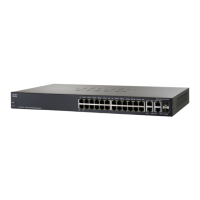
